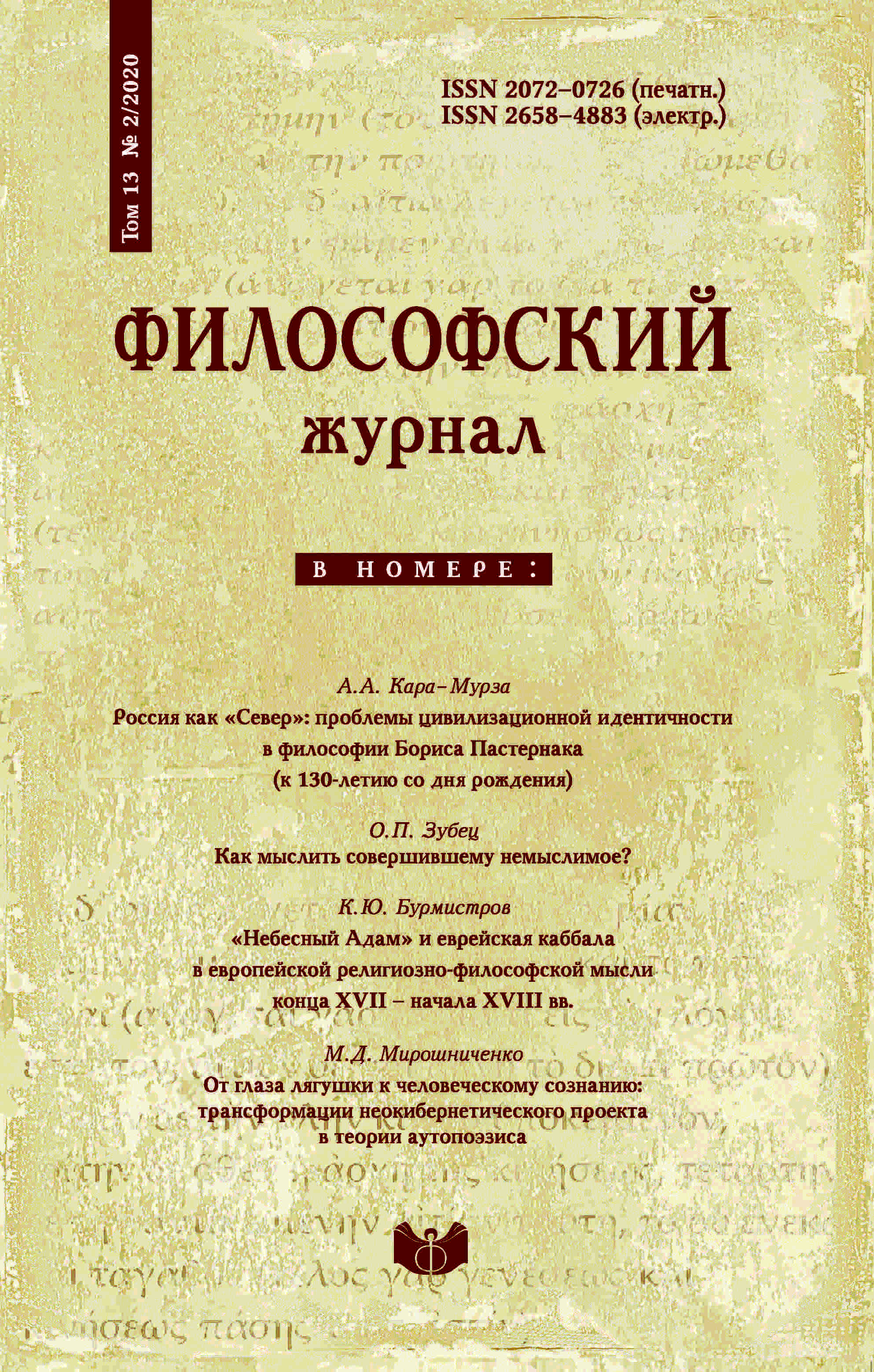Following Adam’s road: the problem of restoring of the primordial language in Paracelsian philosophy
Appendix: Wolfgang Ambrosius Fabricius. Ἀπόρημα βοτανικόν. On the signatures of plants (translation into Russian and comments by Anton V. Karabykov)
DOI:
https://doi.org/10.21146/2072-0726-2020-13-2-68-96Keywords:
Paracelsus, Emblematic World View, Renaissance Neoplatonism, hermeneutics of nature, signatures of things, Genesis, history of science and medicineAbstract
The goal of the article is to explore the system of beliefs and presumptions underlying the linguo-philosophic and semiotic constructions developed by Paracelsus and his followers as well as their views on the essence and modes of finding of the primordial language. That system and those views are explored in the context of the “Adamistic” studies of the 15th – 17th cc. and of the Paracelsian doctrine as a whole. Special attention is paid to Paracelsus’ interpretation of the biblical stories about the world and the human creation, the original naming and the Fall, since this interpretation elucidates the meaning of the abovementioned constructions. It is argued that in the light of Paracelsianism, the acquisition, as well as the very poiesis of the Ursprache depends directly on one’s proficiency in the art of interpreting the signatures (Kunst signata) implanted by God in natural things. That art the theory of which was developed by Paracelsus on a basis of folk medicine practice played a major role in the “Adamistic” speculations of Paracelsians and marginalized the linguo-philosophic issues. They portrayed Adam as a paradigmatic hermeneutist of the natural world and used the biblical story about the naming of animals and birds (Gen. 2.19‒20) chiefly for legitimizing the doctrine of signatures, which was central to the medicine and natural philosophy of Paracelsus.
The research is supplemented with an abridged translation of the treatise written by the German scholar Wolfgang Ambrosius Fabricius Ἀπόρημα βοτανικόν. De signaturis plantarum (1653). That text is devoted to a critical analysis of the Paracelsian doctrine of signatures from the position of a moderate Galenism, which dominated in the university medicine of that age.






